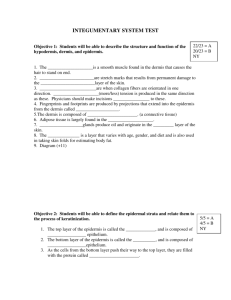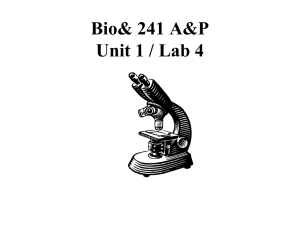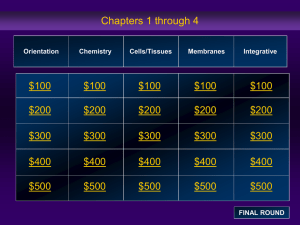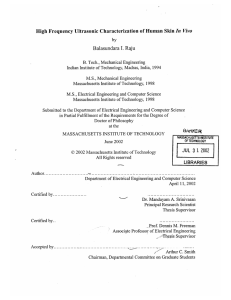REVIEW/STUDY GUIDE FOR EXAM 1
advertisement
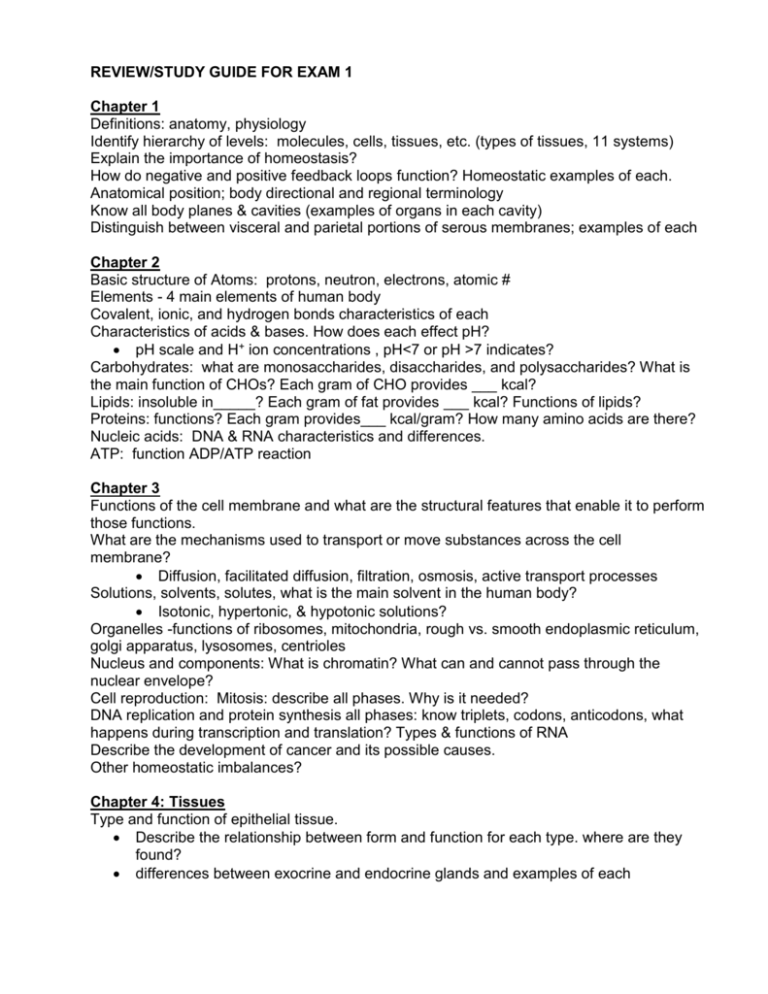
REVIEW/STUDY GUIDE FOR EXAM 1 Chapter 1 Definitions: anatomy, physiology Identify hierarchy of levels: molecules, cells, tissues, etc. (types of tissues, 11 systems) Explain the importance of homeostasis? How do negative and positive feedback loops function? Homeostatic examples of each. Anatomical position; body directional and regional terminology Know all body planes & cavities (examples of organs in each cavity) Distinguish between visceral and parietal portions of serous membranes; examples of each Chapter 2 Basic structure of Atoms: protons, neutron, electrons, atomic # Elements - 4 main elements of human body Covalent, ionic, and hydrogen bonds characteristics of each Characteristics of acids & bases. How does each effect pH? pH scale and H+ ion concentrations , pH<7 or pH >7 indicates? Carbohydrates: what are monosaccharides, disaccharides, and polysaccharides? What is the main function of CHOs? Each gram of CHO provides ___ kcal? Lipids: insoluble in_____? Each gram of fat provides ___ kcal? Functions of lipids? Proteins: functions? Each gram provides___ kcal/gram? How many amino acids are there? Nucleic acids: DNA & RNA characteristics and differences. ATP: function ADP/ATP reaction Chapter 3 Functions of the cell membrane and what are the structural features that enable it to perform those functions. What are the mechanisms used to transport or move substances across the cell membrane? Diffusion, facilitated diffusion, filtration, osmosis, active transport processes Solutions, solvents, solutes, what is the main solvent in the human body? Isotonic, hypertonic, & hypotonic solutions? Organelles -functions of ribosomes, mitochondria, rough vs. smooth endoplasmic reticulum, golgi apparatus, lysosomes, centrioles Nucleus and components: What is chromatin? What can and cannot pass through the nuclear envelope? Cell reproduction: Mitosis: describe all phases. Why is it needed? DNA replication and protein synthesis all phases: know triplets, codons, anticodons, what happens during transcription and translation? Types & functions of RNA Describe the development of cancer and its possible causes. Other homeostatic imbalances? Chapter 4: Tissues Type and function of epithelial tissue. Describe the relationship between form and function for each type. where are they found? differences between exocrine and endocrine glands and examples of each Compare the structure and function of Connective tissue. Explain how epithelial and connective tissues combine to form four different types of membranes. What are their functions? What are the 3 types of muscle tissue? Which are voluntary and involuntary? Striated and nonstriated? Where are each located? What is the general structure of a neuron? What are the 4 signs of inflammation? Why does each occur and why is it beneficial? Steps in tissue repair How does aging affect tissues in the body? How do tissue changes lead to a malignant tumor? How are tumors classified? Warning signs? Chapter 5: Mechanisms of Disease Relationship between homeostasis and disease Various types of disease What are acute, chronic and latent diseases? Distinguish between a symptom, sign, and syndrome. Know diagnosis and prognosis. Major types of disease causing organisms: How do pathogens get into or out of the body? What are 3 mechanisms of disease transmission and some examples? Difference between sterilization and disinfection? Universal precautions? Modes of action that antibiotics have on bacteria. Distinguish between endemic, epidemic, and pandemic disease. Chapter 6: Integumentary Skin Qualities & Functions: TWO LAYERS: Epidermis & Dermis *hypodermis: not part of the skin, connects dermis to underlying fascia (subcutaneous layer) EPIDERMIS what are the cells of the epidermis? what are the layers? which layer is only present in thick skin? which layer contains melanocytes? which is the thickest? know factors affecting Skin coloring: cyanosis, blushing, tanning, dark vs. light skin DERMIS: What type of tissue? Know it contains blood vessels, sweat, oil, nerve endings etc. What are dermal papillae? HAIR: Function? Know: Hair Follicle: papilla, root, & shaft. How does hair grow? What causes hair color? Function of Arector Pili? NAILS: How are they formed? Know parts of the nail. Know diagnostic procedures and major skin conditions Know different types of skin cancer and burns






